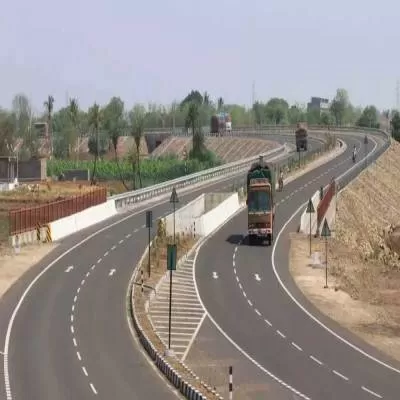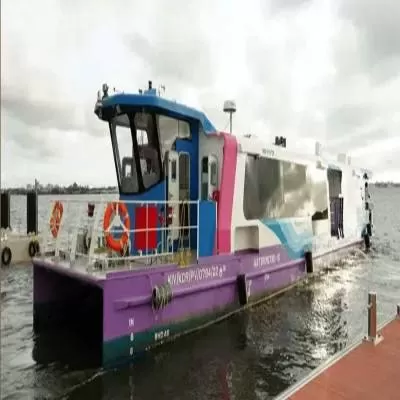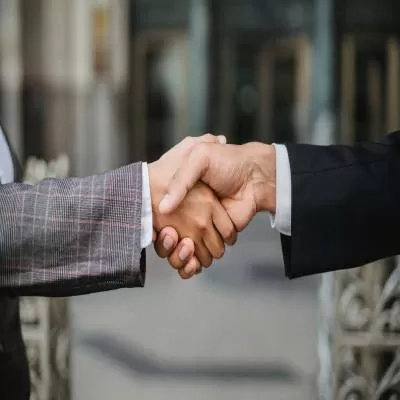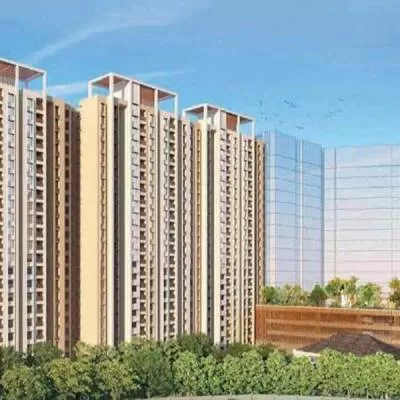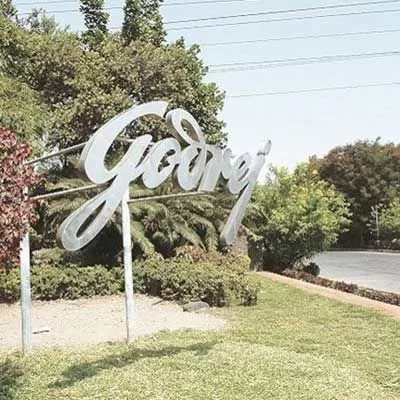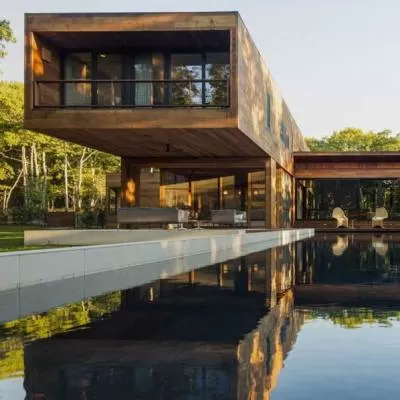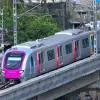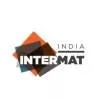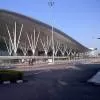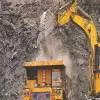- Home
- Real Estate
- "We will be investing $ 1-2 million in India in the forthcoming years"

"We will be investing $ 1-2 million in India in the forthcoming years"
Taking forward its commitment towards creating a sustainable future, the US Green Building Council (USGBC) has its eye on the booming green market in India. The council, along with the Indian Green Building Council (IGBC), has been playing a pivotal role in providing LEED green building certification to the country’s flourishing infrastructure. In a recent media session by the USGBC in Mumbai, Mahesh Ramanujam, CEO, USGBC, announced the new LEED v4 and its tie-up with The Energy and Resources Institute (TERI). In an exclusive interaction with CW, Ramanujam details the future plans of the council for India…
Now that India ranks among the top countries world over for LEED-certified green space, how do you view the potential with regard to the green building market?
The Indian economy has always been stable compared to other developed economies that often face rapid growth or slack down. At present, the country is positioned third globally for most LEED-certified green building space. With an expected 50-60 per cent growth in green buildings in the next three years, we are expecting India to gain a global top-two position. Moreover, with the Modi Budget having mentioned an allocation of Rs 8,000 crore for 100 more eco-cities in India, this certainly backs our vision. Having said so, the problem in India is that despite awareness of green buildings, people are sceptical when it comes to considering the business and investment perspective.
You have established a LEED customer service hub in New Delhi. What services will it offer to a developer?
The ‘LEED hub’, as it is called, has been developed with the fundamental premise to provide a global connect to the Indian market. The hub will operate to fulfil the following goals:
- It will collaborate with the Southeast Asian market to meet the demand-supply market of India with other countries.
- Second, it will work on influencing the policy management of legislation and governmental bodies.
- Third, it will work towards encouraging product manufacturers to create better and more sustainable green projects.
- Last, it will offer consultation services along with market intelligence development.
Local factors for every country differ, hence do their green standards. USGBC customises products as per local preferences and promotes local supply of products and technologies. With regard to research, we have associated with TERI and other area practitioners. We will be initiating the Alternates Complaints Pacts (ACP), focusing on provision of alternate eco-friendly standards that are operational or can be made operational. The ACP version is complete for the earlier version of LEED v3 and is now in progress for the next version LEED v4. The regional credits initiative with TERI is in the planning stages in which provision of regional green features will be the objective.
Kindly elaborate upon your association with TERI.
Our association with TERI is based on three objectives: awareness, performance and co-branding. We are working on developing the LEED Dynamic Plaque (LDP), which gives a performance score to the building based on energy, water, human experience and transportation. In addition, we will work in alignment to provide both LEED and GRIHA ratings to buildings. In the next two to three years, we might think of merging them; however, as of now, consumers have to apply for them individually. We do not want to create new ratings for existing buildings as installing green features becomes difficult. Hence, we have initiated the Regional LEED-EB, which will focus on regional factors while deciding a stand for green buildings. (EB stands for existing buildings.)
While there are pre-certifications offered for a project under construction and a final certification offered to a completed project, what efforts are being made to ensure that the green features of the rated project are audited regularly? Are you considering putting a system in place for the same in India?
In India, TERI has developed a methodology for on-site verification that keeps post-occupancy green check. Moreover, we are in active discussion with leading certification providers who focus on providing records and information on eco-friendly, on-site infrastructure. The check will be a periodic sampling done across the globe, which initially will be 10 per cent of sample buildings. At present, this is implemented only in the US.
Tell us about the GBCI. How is its role different from that of the IGBC?
GBCI, created by USGBC five years ago, is the only organisation authorised to provide LEED certification in the US. We have certified 60, 000 buildings globally. Looking forward, GBCI would now be the only certifying body in India.
Having said that, IGBC will be our partner till 2018 as many building projects need time for completion. It will certify projects registered up to June 30, 2014. All buildings will be registered under the GBCI after that.
While developers often cite cost as a key reason that makes them refrain from adopting the latest green technologies like solar photovoltaic panels, is there any way this technology can be incentivised? Is there a role USGBC or GBCI have to play here?
Getting incentives from the Government to ease out expensive green infrastructure is certainly part of our plan. However, we feel with increasing demand, the cost of green infrastructure will decrease accordingly. Green technology is expensive because US standard technologies certainly cost higher compared to local ones. However, this will be taken care of by the ACPs. If we get the certification locally, costs will reduce automatically. Further, we are in discussion with ex-cabinet secretaries to be our senior strategic advisories.
Also, at the policy level in India, do you think we need more additions supporting the green building concept? If yes, what should they be and why?
The only problem in India is that projects are implemented at a slow pace and there is less dominance of the Government to get things working faster. There is nothing missing in India; only the lack of urgency is a weakness. Projects are launched but there is no fixed date for completion. In terms of the green market, product transparency is critical. By building residential homes, you cannot be sure that your products are coded correctly. You must be guaranteed that you are buying the right materials to build the infrastructure.
Kindly elaborate upon your investments—in terms of cost and services/utilities—being made in India.
Cost: At present, our investments focus on product development with initiatives that have crossed over $ 40 million. The LDP cost us $ 7 million. Every year, $ 70 million is invested globally by USGBC. LEED is a $ 1.9-billion brand from the market perspective of which now, in India, we will invest $ 1-2 million gradually.
Programme: We are planning to launch a ‘LEED lab’ with the motto that real transformation comes after awareness. Our programme focuses on three levels:
- K12: Up to junior college
- Higher educational institutions, which also includes improving existing educational buildings
- Launching the US-based ‘Green Build’ global conference in India
Mili Majumdar, Director, TERI
"In our association with USGBC, we will help technical and operational development. For existing building ratings, GRIHA does not have a rating system at present, hence we will be partnering with LEED to regionalise this and apply for existing buildings only. As audit for existing buildings is essential, it will be an integral part of LEED-EB. Having said so, neither of the two organisations have any set audit rules. For new buildings dual ratings will be implemented, in which a building can apply for both the LEED and GRIHA ratings together. However, it won’t be mandatory and will be the choice of the building. We will also implement the LDP, which is a real-time monitoring protocol for existing buildings and performance measurement that will be based on five parameters: energy, water, health, transportation and sustainable site."
Mahesh Ramanujam, CEO, USGBC Taking forward its commitment towards creating a sustainable future, the US Green Building Council (USGBC) has its eye on the booming green market in India. The council, along with the Indian Green Building Council (IGBC), has been playing a pivotal role in providing LEED green building certification to the country’s flourishing infrastructure. In a recent media session by the USGBC in Mumbai, Mahesh Ramanujam, CEO, USGBC, announced the new LEED v4 and its tie-up with The Energy and Resources Institute (TERI). In an exclusive interaction with CW, Ramanujam details the future plans of the council for India… Now that India ranks among the top countries world over for LEED-certified green space, how do you view the potential with regard to the green building market? The Indian economy has always been stable compared to other developed economies that often face rapid growth or slack down. At present, the country is positioned third globally for most LEED-certified green building space. With an expected 50-60 per cent growth in green buildings in the next three years, we are expecting India to gain a global top-two position. Moreover, with the Modi Budget having mentioned an allocation of Rs 8,000 crore for 100 more eco-cities in India, this certainly backs our vision. Having said so, the problem in India is that despite awareness of green buildings, people are sceptical when it comes to considering the business and investment perspective. You have established a LEED customer service hub in New Delhi. What services will it offer to a developer? The ‘LEED hub’, as it is called, has been developed with the fundamental premise to provide a global connect to the Indian market. The hub will operate to fulfil the following goals: It will collaborate with the Southeast Asian market to meet the demand-supply market of India with other countries. Second, it will work on influencing the policy management of legislation and governmental bodies. Third, it will work towards encouraging product manufacturers to create better and more sustainable green projects. Last, it will offer consultation services along with market intelligence development. Considering that the Indian environment and geographical scenario is very different from that of the US, how do you customise your services as per Indian standards? What is the research involved to understand what India wants? Local factors for every country differ, hence do their green standards. USGBC customises products as per local preferences and promotes local supply of products and technologies. With regard to research, we have associated with TERI and other area practitioners. We will be initiating the Alternates Complaints Pacts (ACP), focusing on provision of alternate eco-friendly standards that are operational or can be made operational. The ACP version is complete for the earlier version of LEED v3 and is now in progress for the next version LEED v4. The regional credits initiative with TERI is in the planning stages in which provision of regional green features will be the objective. Kindly elaborate upon your association with TERI. Our association with TERI is based on three objectives: awareness, performance and co-branding. We are working on developing the LEED Dynamic Plaque (LDP), which gives a performance score to the building based on energy, water, human experience and transportation. In addition, we will work in alignment to provide both LEED and GRIHA ratings to buildings. In the next two to three years, we might think of merging them; however, as of now, consumers have to apply for them individually. We do not want to create new ratings for existing buildings as installing green features becomes difficult. Hence, we have initiated the Regional LEED-EB, which will focus on regional factors while deciding a stand for green buildings. (EB stands for existing buildings.) While there are pre-certifications offered for a project under construction and a final certification offered to a completed project, what efforts are being made to ensure that the green features of the rated project are audited regularly? Are you considering putting a system in place for the same in India? In India, TERI has developed a methodology for on-site verification that keeps post-occupancy green check. Moreover, we are in active discussion with leading certification providers who focus on providing records and information on eco-friendly, on-site infrastructure. The check will be a periodic sampling done across the globe, which initially will be 10 per cent of sample buildings. At present, this is implemented only in the US. Tell us about the GBCI. How is its role different from that of the IGBC? GBCI, created by USGBC five years ago, is the only organisation authorised to provide LEED certification in the US. We have certified 60, 000 buildings globally. Looking forward, GBCI would now be the only certifying body in India. Having said that, IGBC will be our partner till 2018 as many building projects need time for completion. It will certify projects registered up to June 30, 2014. All buildings will be registered under the GBCI after that. While developers often cite cost as a key reason that makes them refrain from adopting the latest green technologies like solar photovoltaic panels, is there any way this technology can be incentivised? Is there a role USGBC or GBCI have to play here? Getting incentives from the Government to ease out expensive green infrastructure is certainly part of our plan. However, we feel with increasing demand, the cost of green infrastructure will decrease accordingly. Green technology is expensive because US standard technologies certainly cost higher compared to local ones. However, this will be taken care of by the ACPs. If we get the certification locally, costs will reduce automatically. Further, we are in discussion with ex-cabinet secretaries to be our senior strategic advisories. Also, at the policy level in India, do you think we need more additions supporting the green building concept? If yes, what should they be and why? The only problem in India is that projects are implemented at a slow pace and there is less dominance of the Government to get things working faster. There is nothing missing in India; only the lack of urgency is a weakness. Projects are launched but there is no fixed date for completion. In terms of the green market, product transparency is critical. By building residential homes, you cannot be sure that your products are coded correctly. You must be guaranteed that you are buying the right materials to build the infrastructure. Kindly elaborate upon your investments—in terms of cost and services/utilities—being made in India. Cost: At present, our investments focus on product development with initiatives that have crossed over $ 40 million. The LDP cost us $ 7 million. Every year, $ 70 million is invested globally by USGBC. LEED is a $ 1.9-billion brand from the market perspective of which now, in India, we will invest $ 1-2 million gradually. Programme: We are planning to launch a ‘LEED lab’ with the motto that real transformation comes after awareness. Our programme focuses on three levels: K12: Up to junior college Higher educational institutions, which also includes improving existing educational buildings Launching the US-based ‘Green Build’ global conference in India Every international player wishes to explore the Indian market. However, the political circumstances make them nervous. We can find a way out by attracting investors who can have a local operation. Mili Majumdar, Director, TERI "In our association with USGBC, we will help technical and operational development. For existing building ratings, GRIHA does not have a rating system at present, hence we will be partnering with LEED to regionalise this and apply for existing buildings only. As audit for existing buildings is essential, it will be an integral part of LEED-EB. Having said so, neither of the two organisations have any set audit rules. For new buildings dual ratings will be implemented, in which a building can apply for both the LEED and GRIHA ratings together. However, it won’t be mandatory and will be the choice of the building. We will also implement the LDP, which is a real-time monitoring protocol for existing buildings and performance measurement that will be based on five parameters: energy, water, health, transportation and sustainable site."


